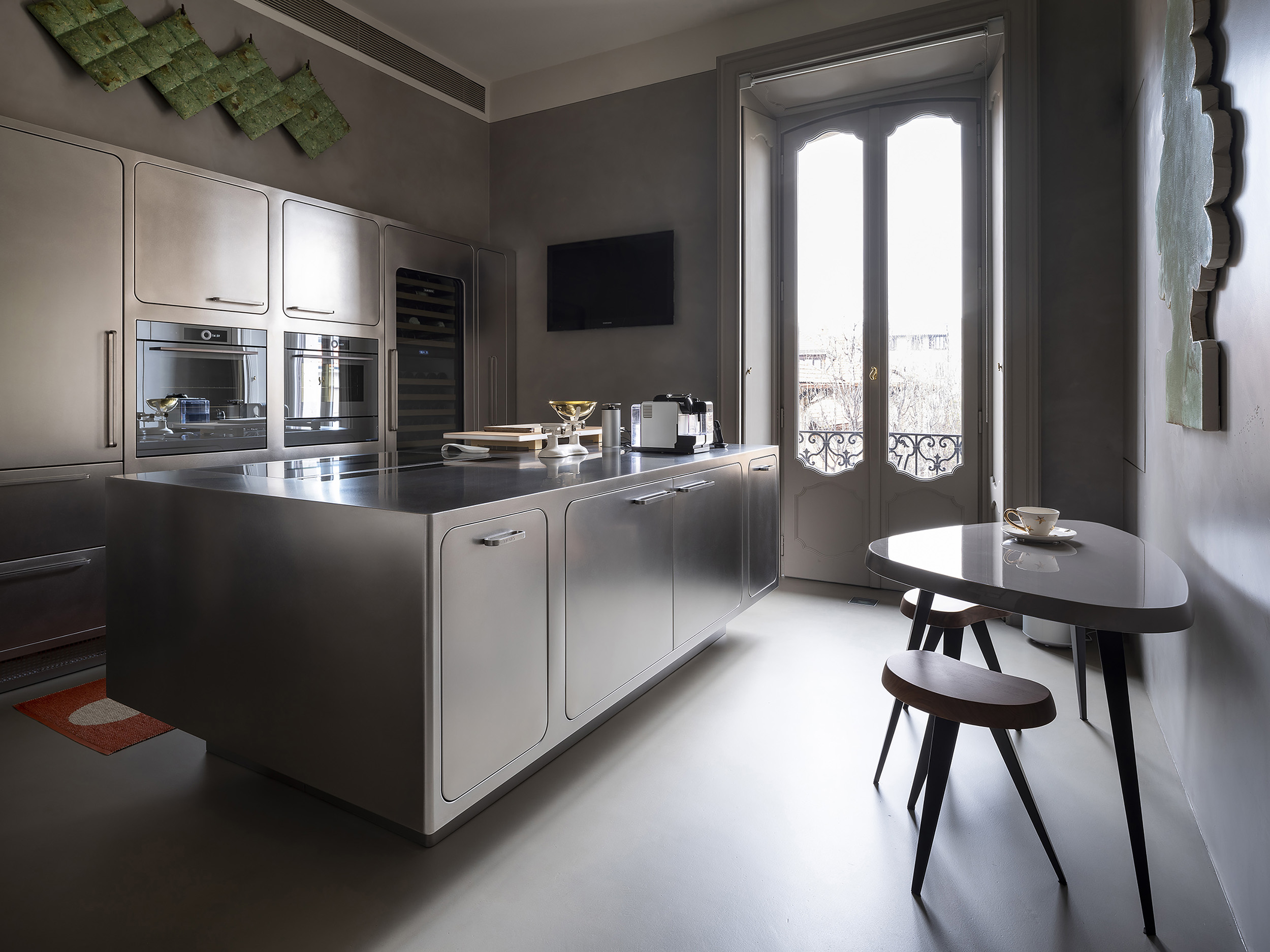
The industrial style kitchen, a type that is very popular in Northern Europe, in Great Britain but also in the USA, is now increasingly being chosen to furnish Italian homes too.
There may be many different reasons for this. First, as a reaction to the prevailing minimalism in the sector, which is pushing kitchens to be increasingly less “visible” inside houses.
Then, because whereas at one time these kitchens focused more on “looking” functional, industrial kitchens offering very high-performance levels are now available.

And finally because “gourmet cuisine” enthusiasts are growing rapidly. These people generally like to work in attractive and rewarding kitchens rather than “aseptic” ones. They prefer a kitchen that can be experienced and shown off, rather than a kitchen to be hidden.
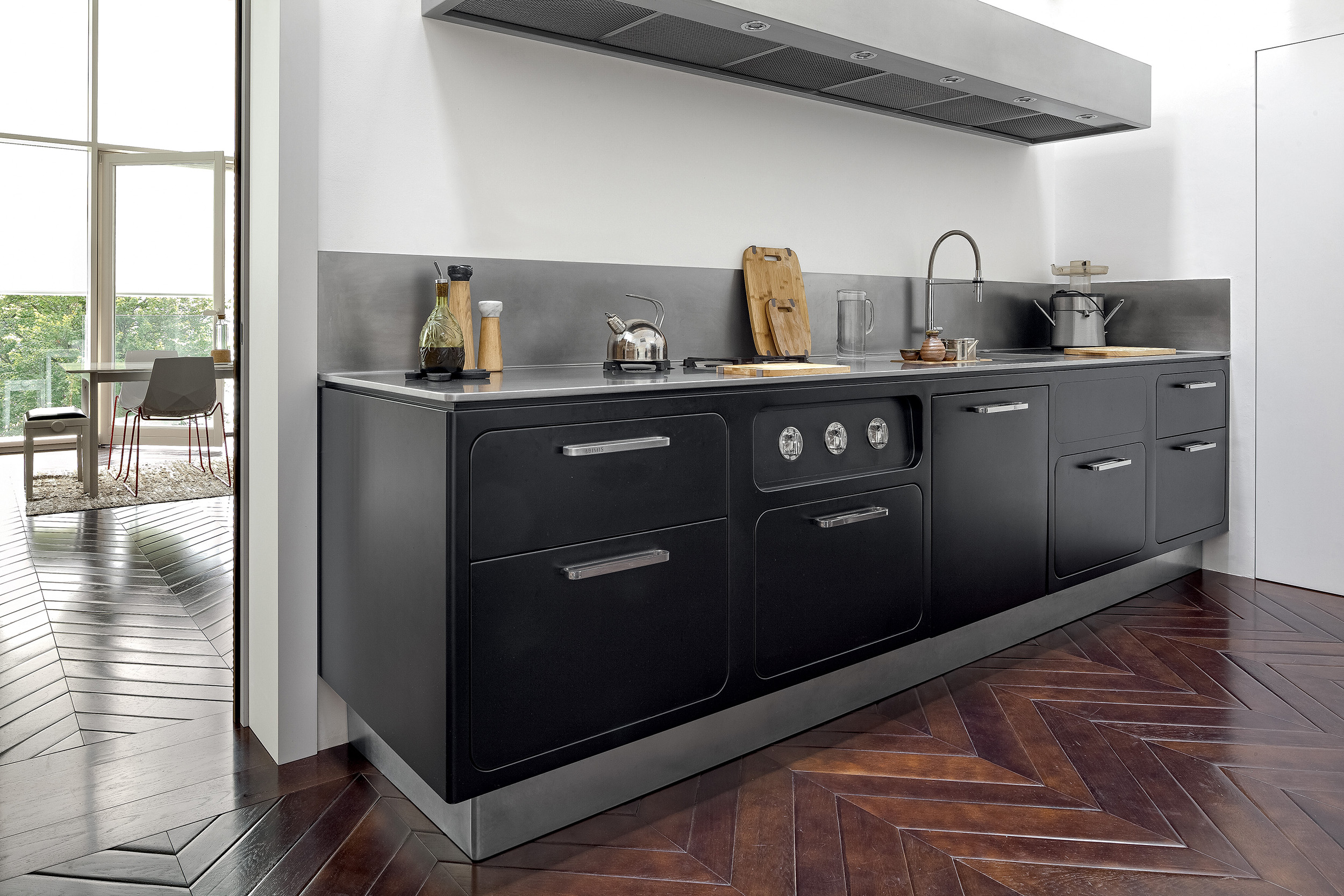
And what could be better, for a “domestic” chef, than having a real semi-professional kitchen in the house?
But let’s look in detail at what a real kitchen in modern industrial style comprises and how to make the most of it inside the house.
Industrial-style kitchens are first and foremost inspired by old restaurant kitchens and have a very retro kind of feel to them. A necessary condition, but no longer enough…
A real industrial kitchen must be able to combine intelligence, aesthetics and tradition. This means taking great care with the design, but without indulging too much in vintage nostalgia. In fact, the stylistic features of an industrial kitchen should not be copied slavishly, but interpreted in a creative and contemporary manner.
This is the only way for it to stand the test of time without quickly tiring (or, worse, disappointing) its owner.
An industrial kitchen has great character and fits perfectly into any style of décor. We can find it in historic dwellings, where it adds a touch of personality even to the most classic furnishings.
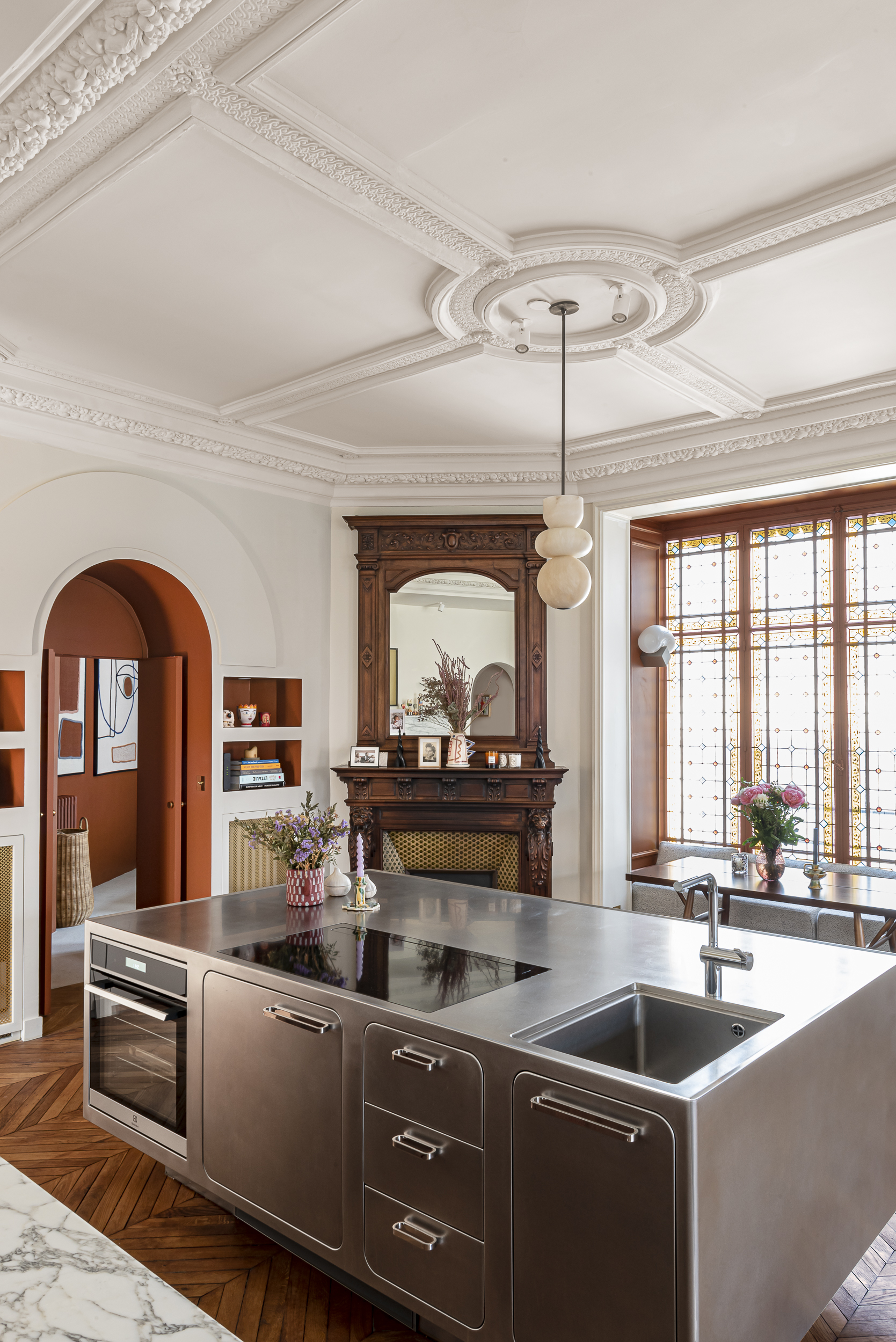
But we can also come across it in designer homes where, by contrast, it enhances even the most minimal furnishings.
Whatever the setting, however, an industrial kitchen never goes unnoticed!
Industrial-style cooking: aesthetics meets functionality
In addition to offering undeniable aesthetic appeal, today’s industrial kitchens must be able to guarantee the best quality and the highest performance in terms of ergonomics, usability and cooking. Otherwise, even the most beautiful industrial kitchen is limited to being an empty exercise in style: aesthetically groomed, but not functional.
So if you are not satisfied with a kitchen with a vintage look but you want a real cooking machine at home (just like the first industrial kitchens) we recommend not only focusing on aesthetics but opting above all for a high quality kitchen.
The industrial inspired kitchen that best fulfils these requirements is undoubtedly the professional derived kitchen. A type designed specifically for home use, but inspired by industrial and restaurant kitchens.
Tips for choosing an industrial style kitchen
1. The industrial kitchen? Better “on view”!
While today’s tendency is towards kitchens that “disappear”, so that they blend into the furnishings of the living area, the spirit of industrial kitchens is exactly the opposite. Industrial style kitchens were made to be admired. For this reason, if possible, they should be left open.
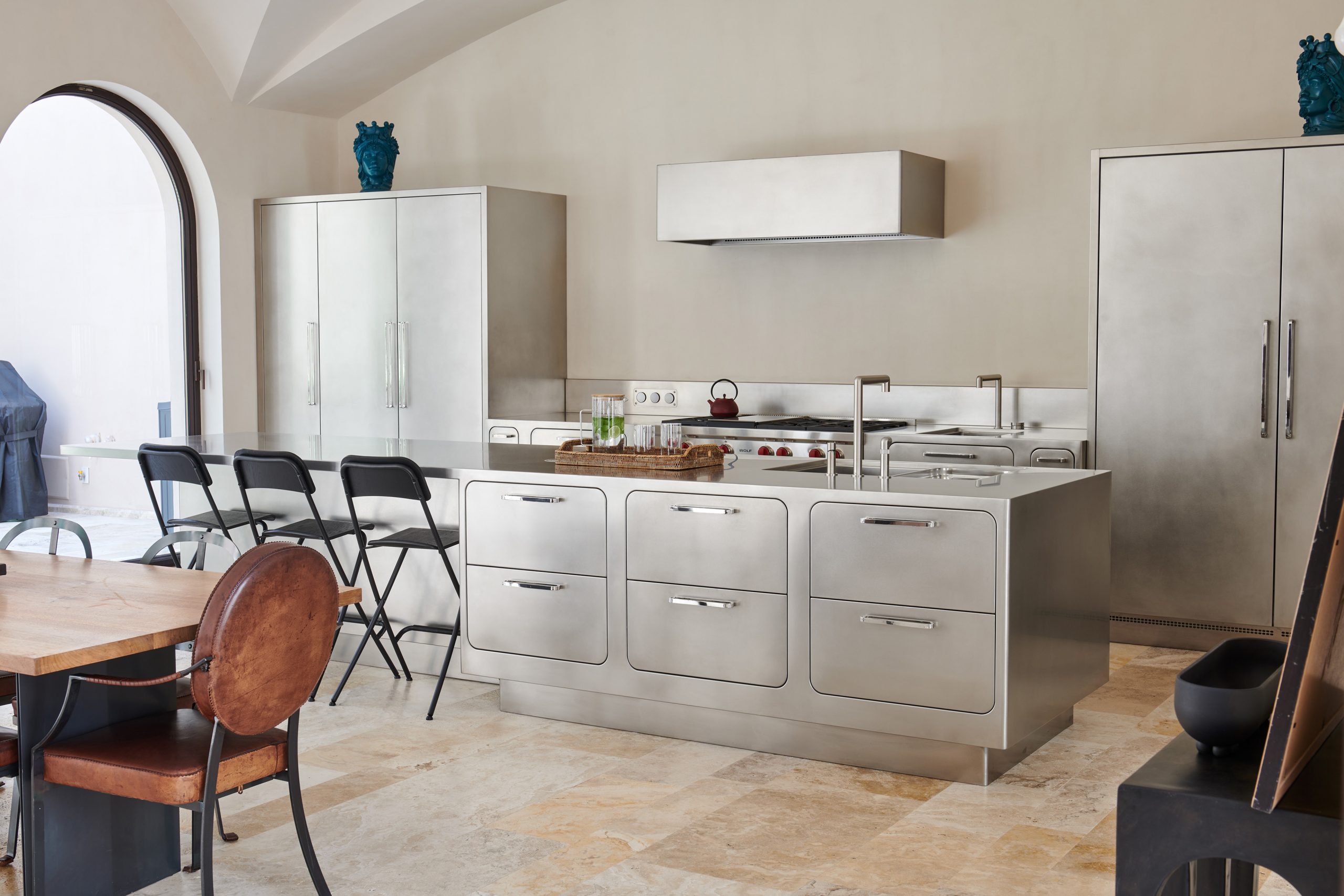
The most commonly used solution in these cases is the kitchen with a central island, which best highlights the decisive and personal nature of an industrial kitchen.
Not only because it is the type that most faithfully resembles the old professional kitchens. But also because the island, the focal element of the whole living area, makes the kitchen the main feature.
Linear or corner industrial kitchens also make a great impression in the house. But caution is needed because in this case the colour and materials chosen for the back wall are fundamental.
2. The materials and finishes of industrial kitchens
The material that distinguishes this style most is undoubtedly stainless steel, which has always been used for industrial kitchens.
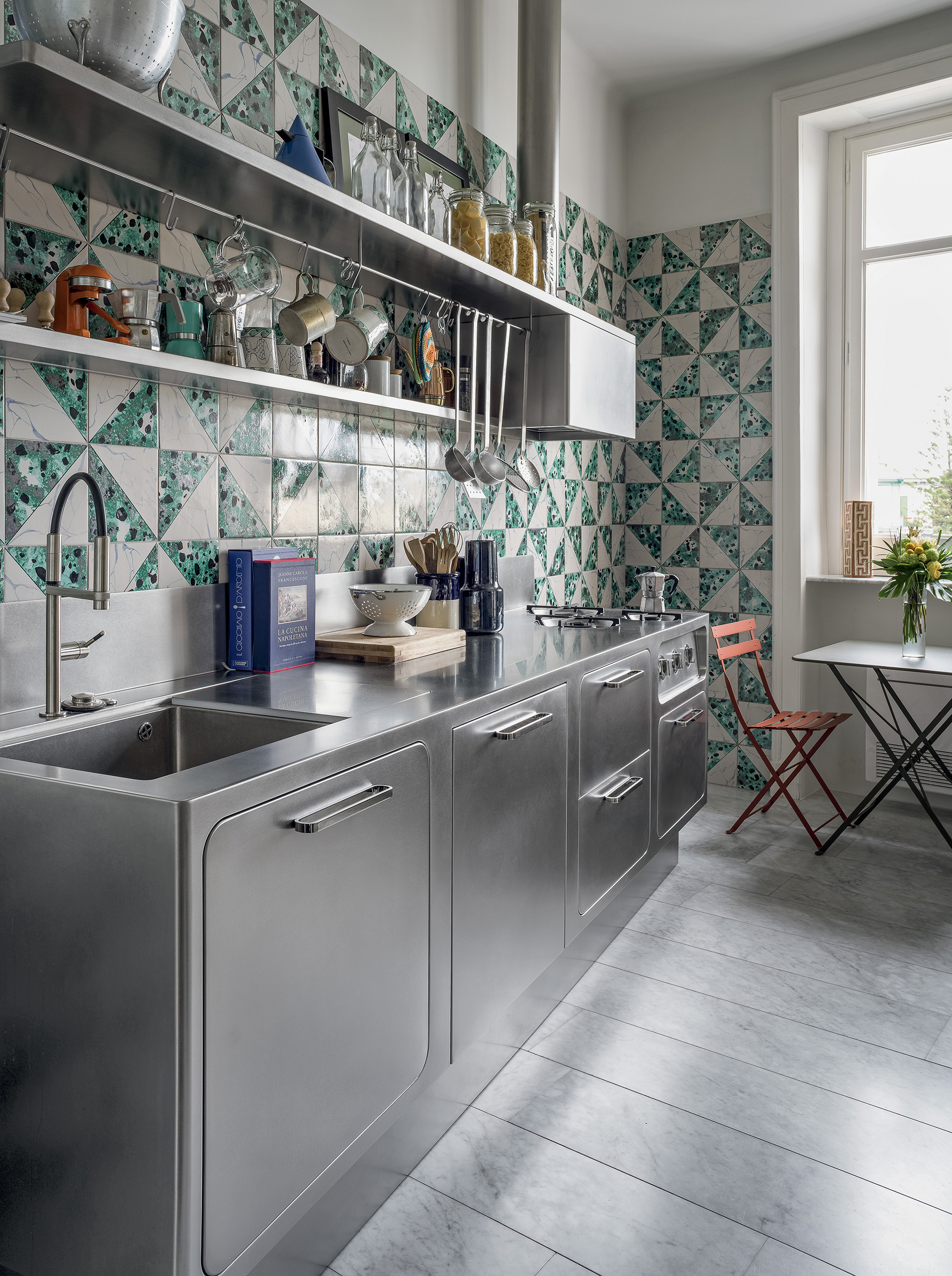
Steel may be the sole protagonist, but it can also be combined with natural stones (e.g. for the top) or other alloys (brass, bronze, copper, etc.).
The details must not be overlooked as they are also fundamental. From the hood to the stove (for a vintage and industrial look, traditional gas hobs should be chosen over glass hobs).
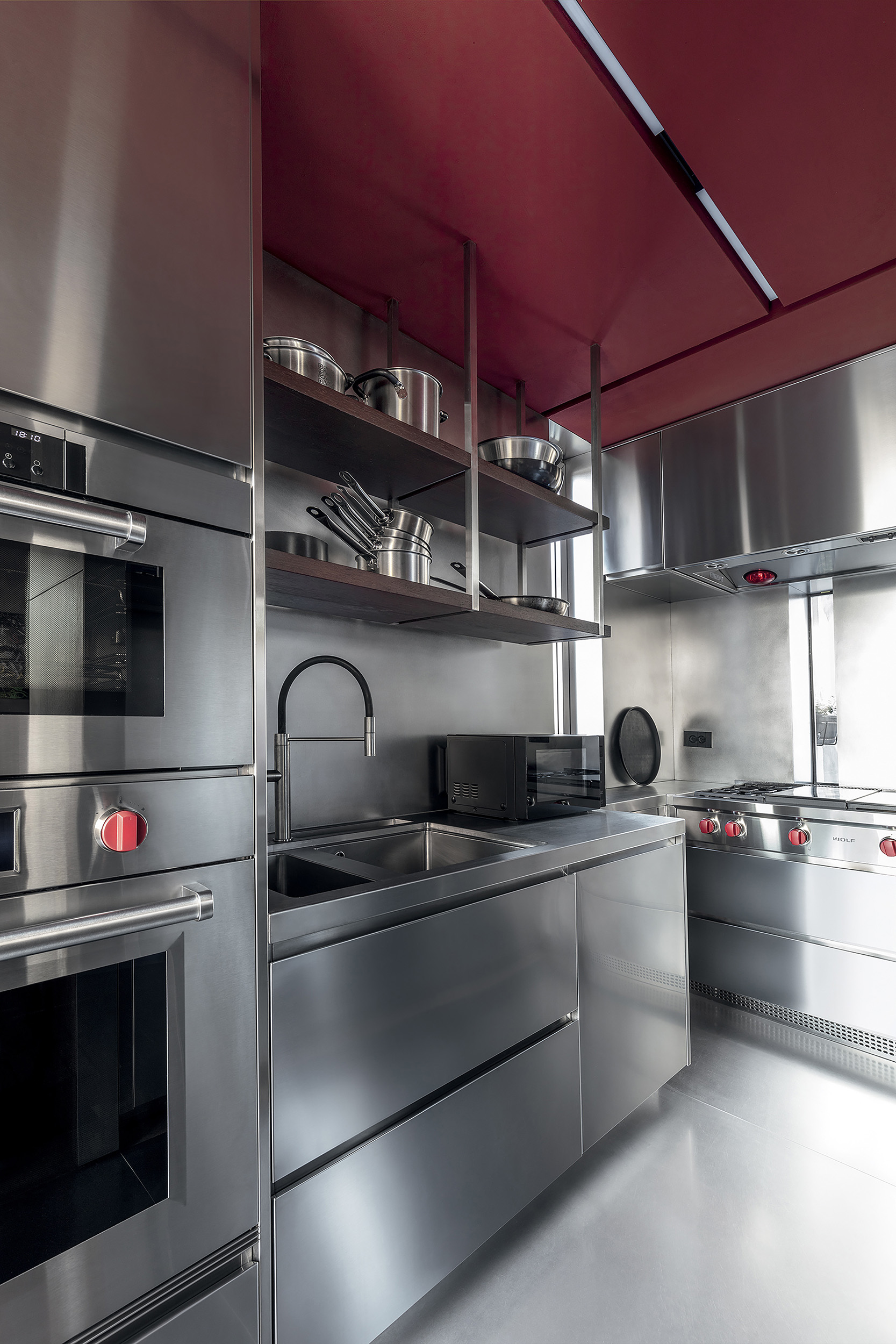
From the gas knobs to the taps, without neglecting the handles which, if chosen carefully, play a very important role.
The final suggestion is to find the right balance between closed containers and open shelves or “étagères”, which leave jars, pots, ladles and kitchen accessories visible. This way the “old restaurant kitchen” effect is guaranteed!
3. The colours and finishes of industrial kitchens…
We have seen that the preferred material for industrial kitchens is stainless steel, which can be painted or left with a natural effect.
Always remember that this kitchen takes over and likes to stand out. Be daring with colours and you will create an environment with great charm. Consider, for example, pumpkin orange or dark blue; “Berkel” or warm ochre yellow; sage green or purple… And, why not, white or black; perhaps with handles made of steel, polished brass or antique bronze…

The stainless steel finishes are usually made with artisan or industrial treatments that change the colour, gloss and the material of the surface. The most common are: the brite scotch finish (satin effect), the hand-orbited finish (warmer and more material), or the mirror polished steel.
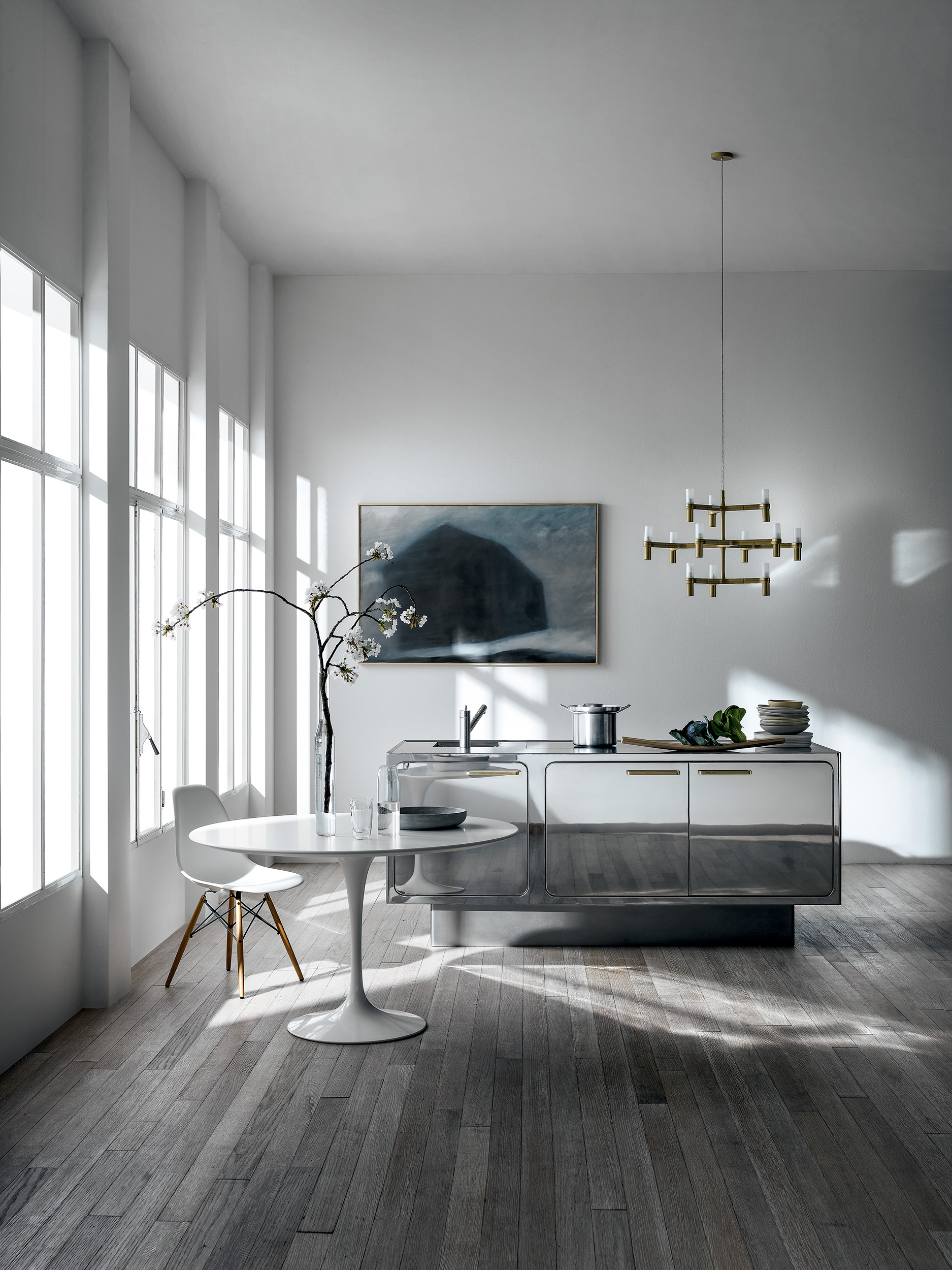
In addition, steel, in all finishes, gives great brightness to the rooms and makes it look bigger.
And don’t worry about fingerprints! Contrary to what people generally think, stainless steel kitchens are very easy to clean.
4. … And the colours to choose for the walls!
For industrial kitchens, walls with dark palettes are usually preferred over brighter coloured walls. Which, by the way, contrast nicely with the brightness of the steel. The most popular shades are grey, earth colours (from ochre to brown), blue and green … even black for the more daring! If you are lucky enough to live in a period house, you could leave the walls with bricks or exposed stones.

This is definitely one of the most effective solutions for the setting of an industrial kitchen. Alternatively, you can recreate rough concrete walls, marble walls, steel walls or vintage-style tiles.
Industrial-style kitchen lighting
While it is true that lighting plays an extremely important role in the kitchen environment, this is even more applicable to industrial kitchens.
In addition to the traditional “functional” lights which need to illuminate the worktop in the most correct, uniform and relaxing way for the eyes, an industrial kitchen should also be equipped with special mood lighting.
Let us reiterate once again that an industrial kitchen acts as a “primadonna” and, as such, likes to be admired even when the spotlight goes out. So it’s important to think of lighting that highlights the details, even in the half-light.
For example, with spotlights that outline the details, or with LED strips hidden in the body of the kitchen itself. An integrated LED light in the skirting board or under the cupboards, for example, can highlight the profile of your kitchen in a modest but striking way.

Finally, if the kitchen is made of stainless steel (even more so if it is in a mirror finish), the lighting will have to be particularly well planned in order to maximise its surfaces but without creating any annoying reflections.
Abimis industrial style kitchens
Abimis has always made only professional stainless steel kitchens. They are designer kitchens, with very high performance levels, specially designed for the home environment. Furthermore, all Abimis kitchens are custom-made and can therefore be personalised down to the smallest detail.
For this reason Abimis is the perfect partner for all those who love high-level industrial-style kitchens, whether they are designers, interior designers or end customers.
Abimis semi-professional kitchens are suitable for both designer and classic homes; from urban lofts to ancient dwellings; from country houses to the most contemporary and trendy apartments.

Abimis offers three types of stainless steel kitchens. The Ego model, whose rounded lines are inspired by the ‘50s and ‘60s. The Atelier line, which reflects the clean lines of the most classic professional kitchens and finally the Àtria collection, for those who also love industrial style for outdoor kitchens.

